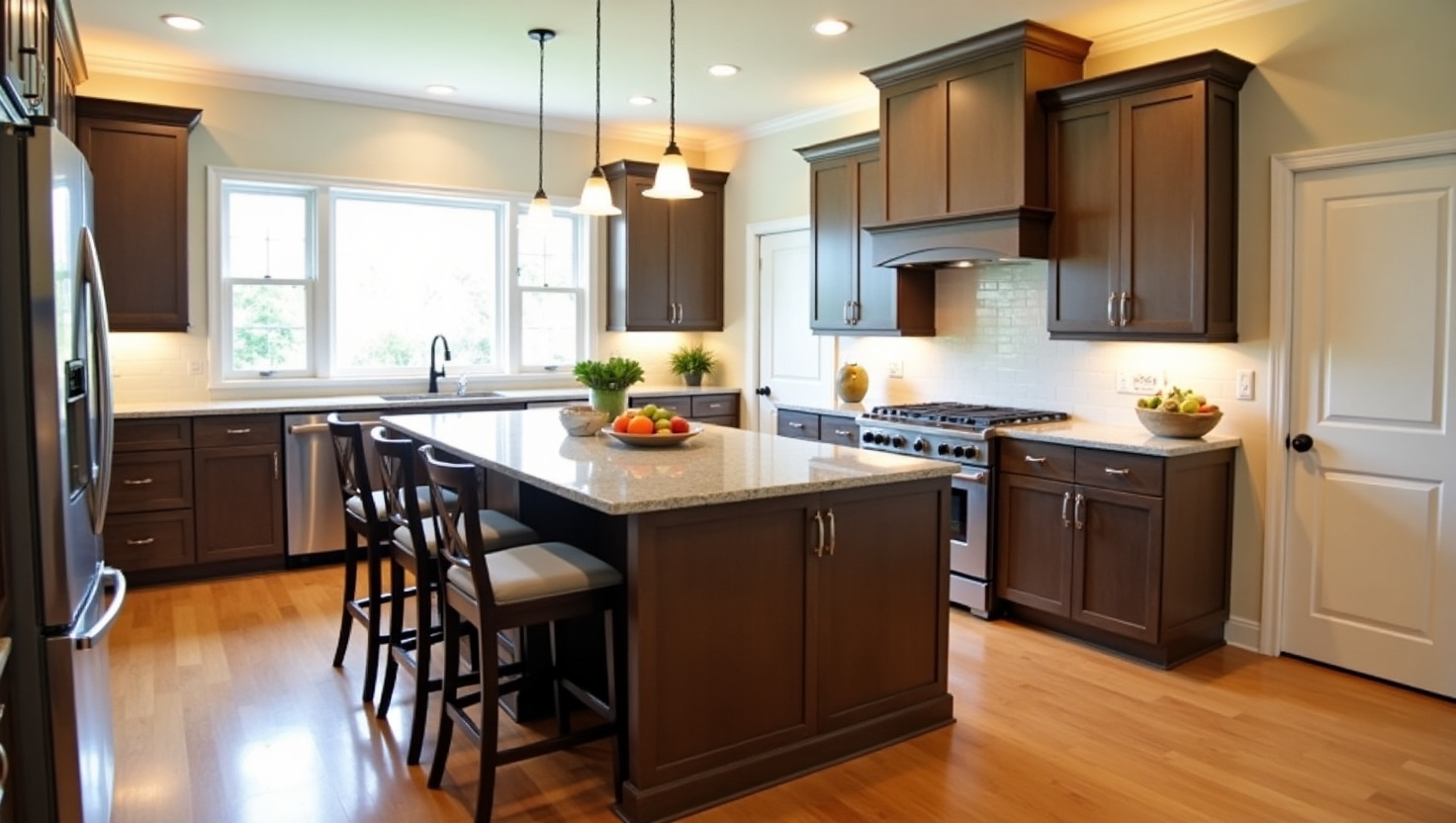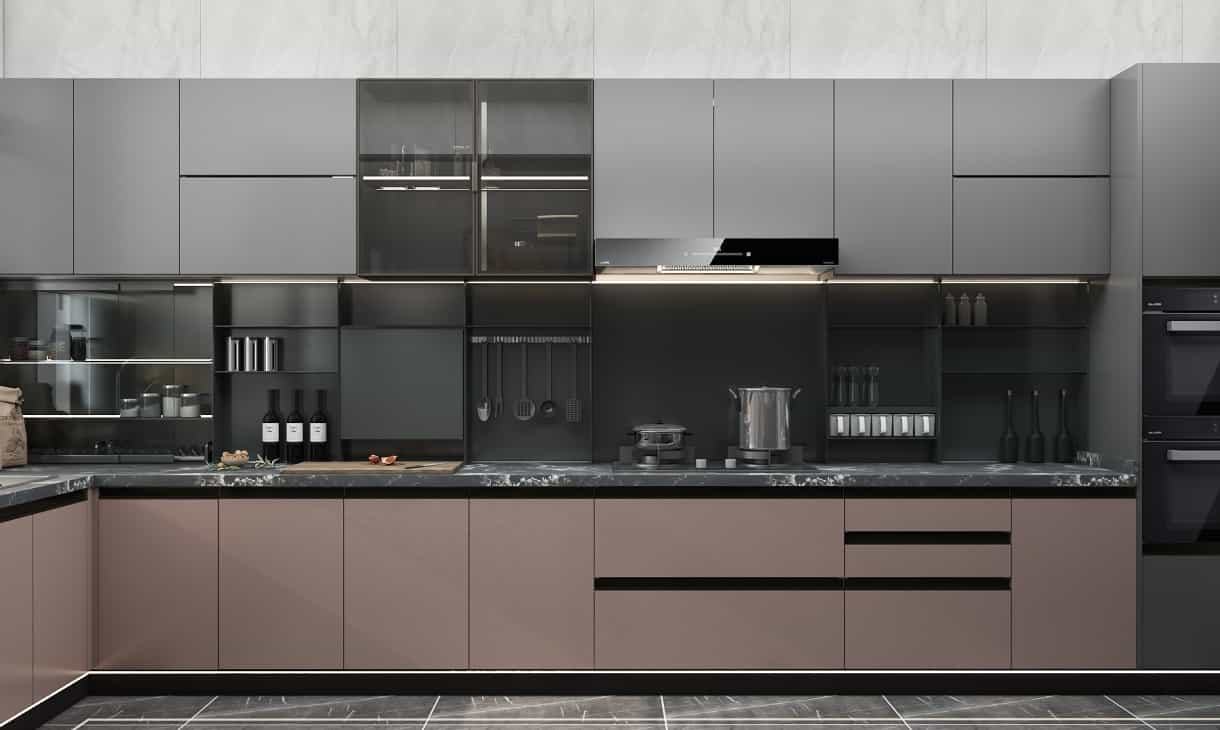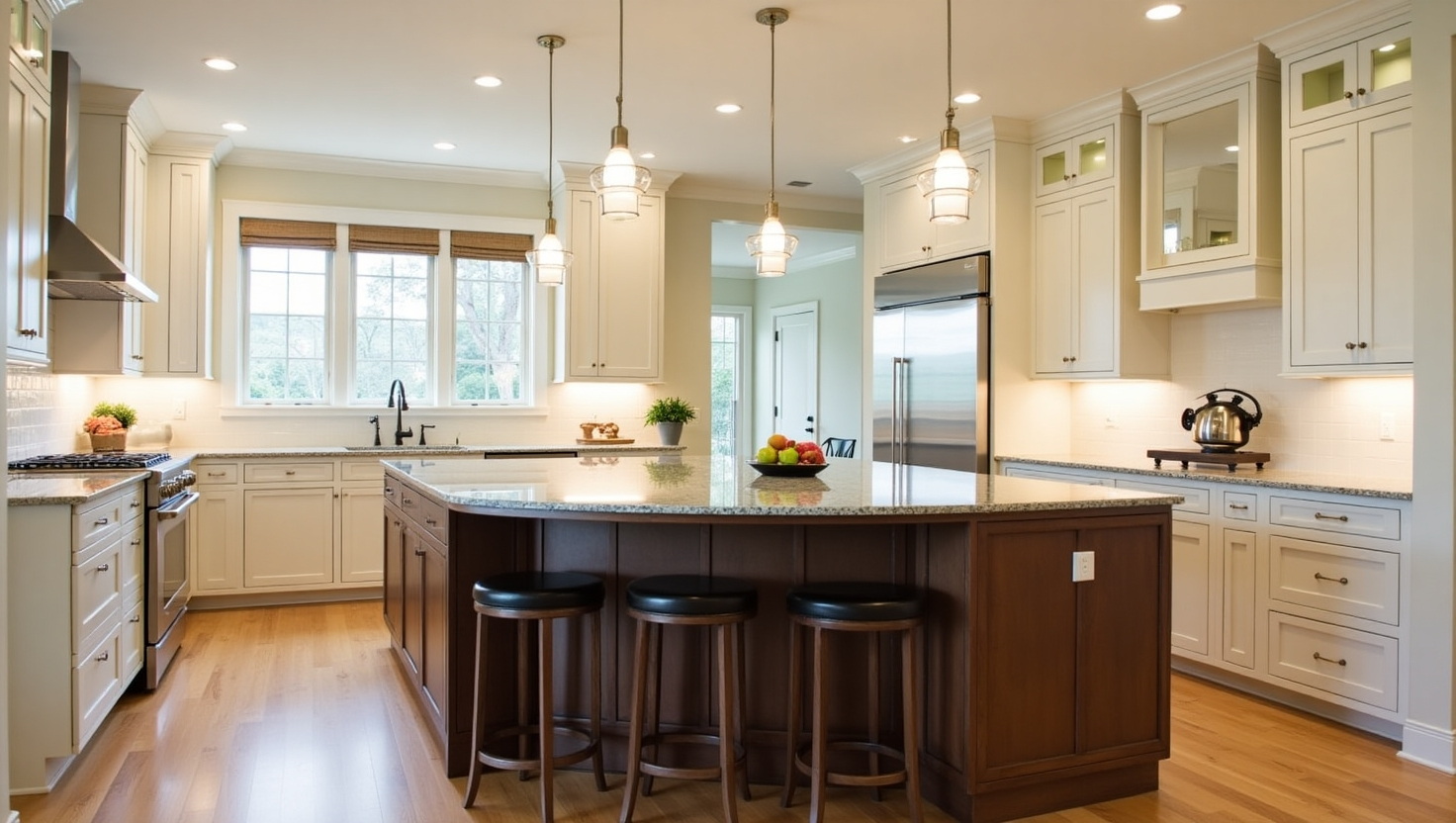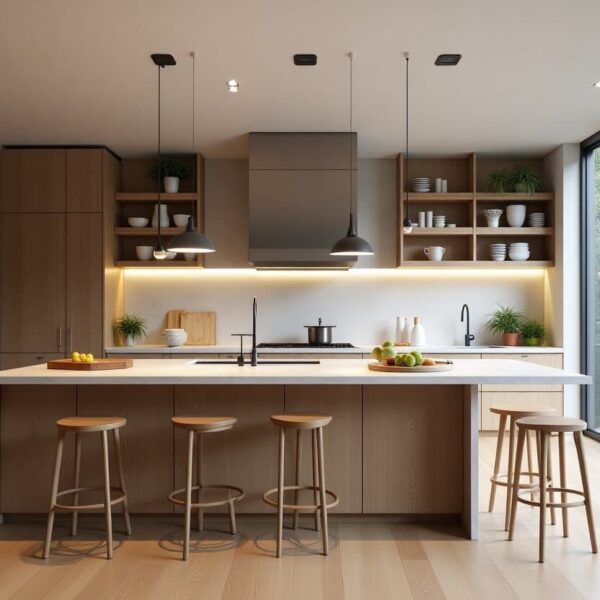Sometimes a kitchen island just feels right. It’s where you drop the groceries, roll out dough, or pour a glass of wine while talking to someone across the counter. For some kitchens, it’s perfect. For others, it’s just in the way. The only way to know? Think about how you really use your space day to day.
This article dives deep into the pros and cons from a professional standpoint to help you make an informed decision.
Understanding Kitchen Islands
At its heart, a kitchen island cabinet is simply a base cabinet that lives right in the middle of your kitchen — but it’s a bit more than that. Unlike standard base cabinets that only need to look good from the front, an island has to be “camera-ready” from all angles. That usually means finishing the back and sides with decorative panels so it feels like a natural, intentional part of the space.
People use kitchen islands in all kinds of ways:
- Prep station – Extra room for chopping, mixing, and getting dinner ready.
- Storage hubs – Cabinets, drawers, and even open shelves to hide (or show off) everything from pots and pans to small appliances.
- Dining spot – A casual breakfast bar or somewhere for a quick bite.
- Social magnet – The place where friends linger and family naturally gathers.

The Kitchen Island: Pros & Cons
The Upside – Why You Might Fall in Love with It
An island instantly gives you more counter space, which is a dream for anyone who loves cooking or baking. The storage underneath can be a game-changer — think oversized pots, rarely used appliances, or even a discreet recycling bin. It’s not just functional; it’s also social. You can chat with friends while you cook or keep an eye on the kids as they do homework.
When designed well, an island can improve your kitchen’s “work triangle” — the flow between the sink, stove, and fridge — making daily tasks feel easier. You can even build in a sink, dishwasher, cooktop, or a mini wine fridge, with outlets right where you need them. This is exactly where a skilled China kitchen cabinet manufacturer can make all the difference with tailored solutions.
The Downside – Things to Watch Out For
The biggest drawback? Space. Without at least 40 inches (about 100 cm) of clearance on all sides, the island will feel like an obstacle rather than a feature. In smaller kitchens, a peninsula might be the smarter move.
Cost is another consideration — custom islands, especially those with plumbing or appliances, can take a big bite out of your renovation budget. And then there’s the “clutter factor.” Without discipline, an island can turn into a landing zone for keys, mail, and random odds and ends. Plus, every extra surface means extra cleaning, so maintenance is part of the deal.
Have a project in mind? Send a message.
Get the catalog for free
How to Decide if a Kitchen Island Is Right for You
Before you get started, ask yourself these crucial questions:
- Is My Kitchen Big Enough? An island needs a kitchen that is at least 2.4 meters (8 feet) deep and 3.6 meters (12 feet) long. Anything smaller, and you risk making the space feel crowded.
- What is My Primary Need? Do you need more storage, a place to eat, or a social gathering spot? An island might be a waste of space if its primary function goes unused.
- What is My Budget? Be realistic about the costs involved, which go beyond just the cabinetry itself.
- What’s My Lifestyle? A home with a busy family or one that frequently entertains will benefit most from an island’s multi-functional nature.
The Secret to a Successful Kitchen Island
When it comes to design, customizing is key. This is where we see the art of a Two-Toned Kitchen Cabinet come into play—using a different color for the island to make it a statement piece while still maintaining a cohesive look.
To avoid regret, consider these design principles:
First, ensure you have the optimal aisle width. You’ll need at least 100 cm (40 inches) of clearance to prevent traffic bottlenecks. Second, consider a multi-functional and modular design, such as a narrow island with wheeled stools or a pull-out countertop, which can make a small space feel much bigger. Additionally, a smart choice of materials is crucial. We recommend durable, easy-to-clean materials like stain-resistant quartz or a wipe-down backsplash to reduce the maintenance burden. Finally, if an island isn’t right for your kitchen, consider alternatives such as a peninsula, a mobile kitchen cart, or a foldable table.

Why Choose NextHome Furnishing for Your Kitchen Cabinets?
Ultimately, a Kitchen Island is not a one-size-fits-all solution. The key to a perfect kitchen is a custom design that fits your space, budget, and lifestyle. At NextHome Furnishing, we are a leading China kitchen cabinet maker with over 10 years of experience in high-end customization. We specialize in bespoke cabinetry, including stunning Two-Toned Kitchen Cabinets and clever storage solutions.
Whether you’re dreaming of a functional island, a practical peninsula, or a complete kitchen overhaul, our professional team is here to help. We offer comprehensive design, production, OEM, and custom manufacturing services to turn your vision into a reality.
Ready to start designing your dream kitchen? Contact us today to begin your customization journey!
Contact NextHome Now!
We are here to help you with your business needs. We have a team of experts who are always eager to help you.



